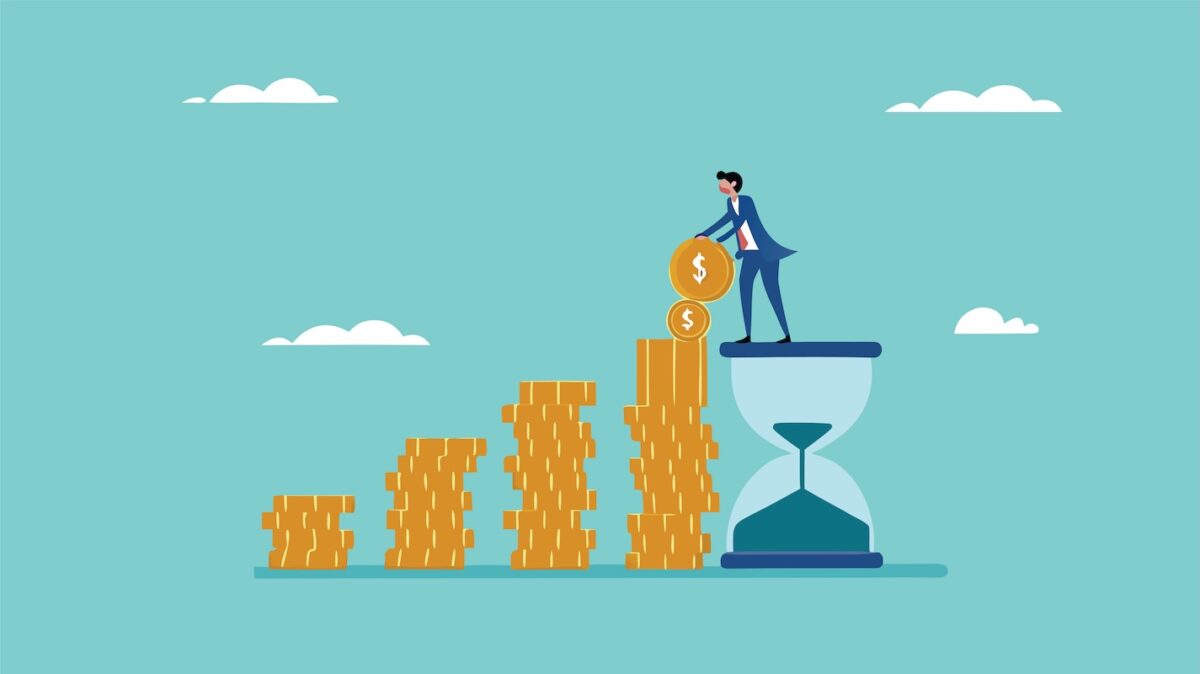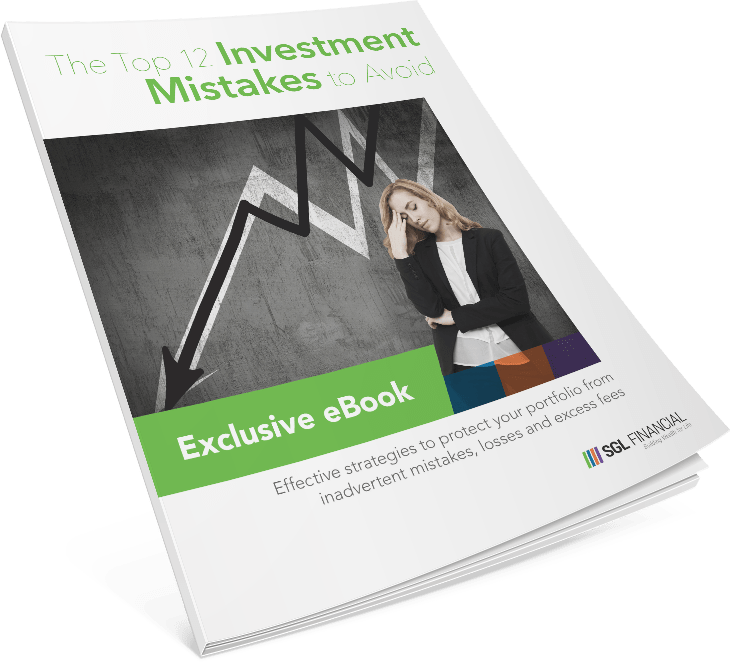The Power of Compounding: Grow Wealth the Smart Way
by Gabriel Lewit

Few forces are as influential as compounding your rates of return when building long-term wealth. It’s the quiet engine behind many successful investors’ disciplines, growing assets, multiplying returns, and rewarding the disciplines of long-term investors. If you have accumulated $250K or more in investable assets, understanding compounding is more than a math lesson; it should become a major part of your wealth-building mindset.
Compounding isn’t flashy, and it doesn’t happen overnight. It’s a steady, reliable force that underlies the pursuit of financial success. Rather than trying to “time the market”, a compounding strategy focuses on time in the market, including reinvesting earnings, diversifying wisely, and staying disciplined.
In today’s blog, we’ll examine compounding strategies, why they matter, and how smart choices, like diversification, reinvesting dividends, and focusing on extended time periods in the market, can help increase the number of assets that work harder over time.
At SGL Financial, our Buffalo Grove financial professionals help clients integrate compounding into their financial planning, retirement strategies, and investment processes.
What Is Compounding Interest?
Compound rates of return describe the growth of an investment when earnings themselves begin to produce earnings. It’s often called “interest on interest,” but it also applies to dividends and capital gains that are reinvested.
Instead of only adding the original return to your starting principal each period, compounding continuously adds the original principal and all past growth. Over time, this snowball effect can create exponential growth—meaning the longer you leave money invested, the more powerful compounding becomes compared to simple interest, which pays only on the original amount.
In financial terms, the earlier you start rolling that snowball, the bigger it can become.
Why Is Compounding Called the Eighth Wonder of the World?
Albert Einstein reportedly called compounding the “eighth wonder of the world.” The reason is simple: compounding can create results that surprise even experienced investors over longer periods.
Consider this example:
- Let’s say you have $250,000 invested at 6% annual growth, which could become more than $450,000 in 10 years without adding a new dollar.
- Reinvesting dividends and holding for 20+ years could magnify that growth even further.
This is why financial planners in Buffalo Grove often encourage clients to think long-term rather than focusing on short-term market swings.
Is Time in the Market More Important Than Timing the Market?
This is one of the most searched investing questions, and for good reason. The short answer? Yes.
Predicting when markets will rise or fall, or “timing the market,” is notoriously difficult, even for experienced investment professionals. Missing just a handful of the best-performing days can significantly reduce long-term returns.
Time in the market includes staying invested through various cycles, allowing compounding to do its work. Even in volatile years, consistent investors benefit more than those who move in and out.
Listen to our podcast episode, “Health and Wealth Lessons in Retirement.”
How Does Dividend Reinvestment Accelerate Compounding?
Dividend-paying stocks provide an excellent example of compounding in action. Instead of spending dividends as cash, reinvesting them buys more shares that will generate increasing dividends in the future.
Over time, reinvested dividends that buy additional shares of stock can represent a significant portion of total return. Many wealthy investors rely on dividend reinvestment as a core strategy for compounding growth.
What Role Does Diversification Play in Compounding?
Diversification is a different investment strategy from compounding. By spreading investments across non-correlated asset classes, such as stocks, bonds, and alternative investments, you reduce the impact of underperformance in one asset class.
This increased stability allows you to remain invested during downturns, which is key to compounding your returns. Anytime you pull money out of the market, you interrupt the compounding process.
Financial advisors in Buffalo Grove often use diversification to manage risk and keep compounding on track.
Here are some examples of current compounding strategies:
- An investor who holds quality stocks for decades benefits from capital appreciation and reinvested dividends. Even modest annual growth rates add up over longer time periods.
- Many companies and funds allow investors to reinvest dividends into additional shares automatically. This hands-off approach steadily builds ownership and accelerates the compounding process.
- Business owners who reinvest profits into their companies often see accelerated growth rates and rising profitability. The same principle applies; reinvested gains typically generate more gains.
Check out our Quick Guide: “Retire and Any Age: Advice from a Financial Advisor in Buffalo Grove”
FAQs About Compounding
1. How long does it take for compounding to show results?
Compounding starts immediately, but the impact becomes more noticeable over long periods, typically 10, 20, or 30 years. That’s why starting early is so valuable.
2. What types of accounts benefit most from compounding?
Retirement accounts like IRAs and 401(k)s are ideal since they often provide tax-deferred or tax-free growth, giving compounding more assets to work with. Taxable accounts can also compound returns; however, taxes can dilute the rates of return that are being compounded.
3. Can compounding work against me?
Yes, when it comes to debt. Credit card balances, for example, compound interest in the opposite direction, growing what you owe instead of what you own.
4. How much should I reinvest for compounding to work?
The more consistently you reinvest, the more valuable the compounding effect. Even partial reinvestment can make a difference over time.
Watch Steve Lewit, our co-founder, discuss on WGN 9 News, the compounding impact you can make on your 401(k) if you withdraw before you retire.
The Behavioral Side of Compounding
Compounding isn’t just about numbers in a report; it’s about how you approach investing. By staying patient, avoiding emotional decisions, reinvesting consistently, and diversifying your portfolio, you give compounding the space to do its best work.
This is often easier said than done, which is why partnering with financial advisors in Buffalo Grove can make a difference. Having a professional sounding board during volatile times can help you avoid costly mistakes and keep your strategy on track.
How Compounding Shapes Retirement Planning
Compounding is central in financial planning for pre-retirees and retirees with assets worth $250K or more. Retirement planners in Buffalo Grove often integrate compounding into:
- Income planning, using dividends and interest strategically.
- Growth strategies, keeping part of the portfolio invested for long-term compounding.
- Wealth transfer plans that can compound across generations through trusts and estate planning.
Even in retirement, compounding doesn’t stop; it simply shifts to balance your growth and income needs over time.
At SGL Financial in Buffalo Grove, our team of financial advisors help clients build strategies that fully utilize compounding while aligning with retirement and life goals. Connect with us to learn more about the impact of compounding on your retirement planning.

